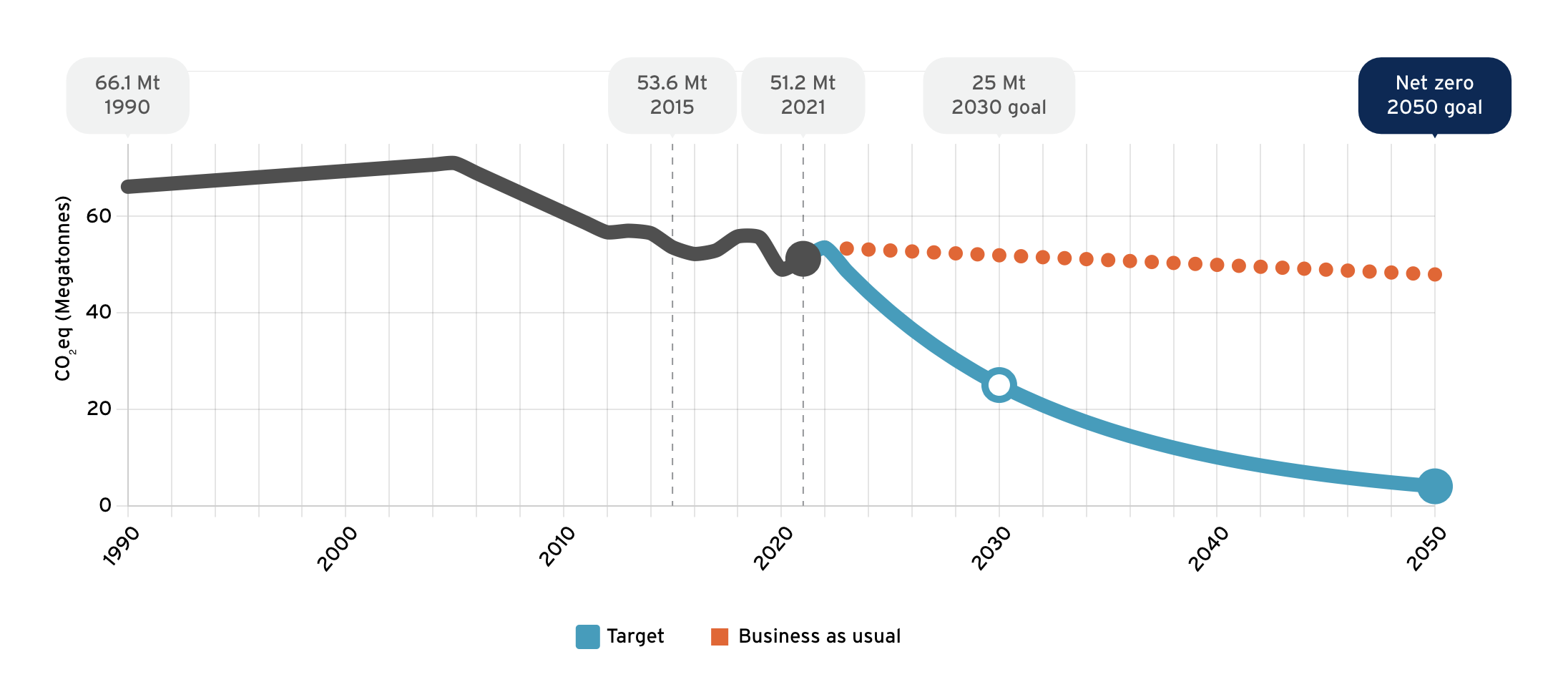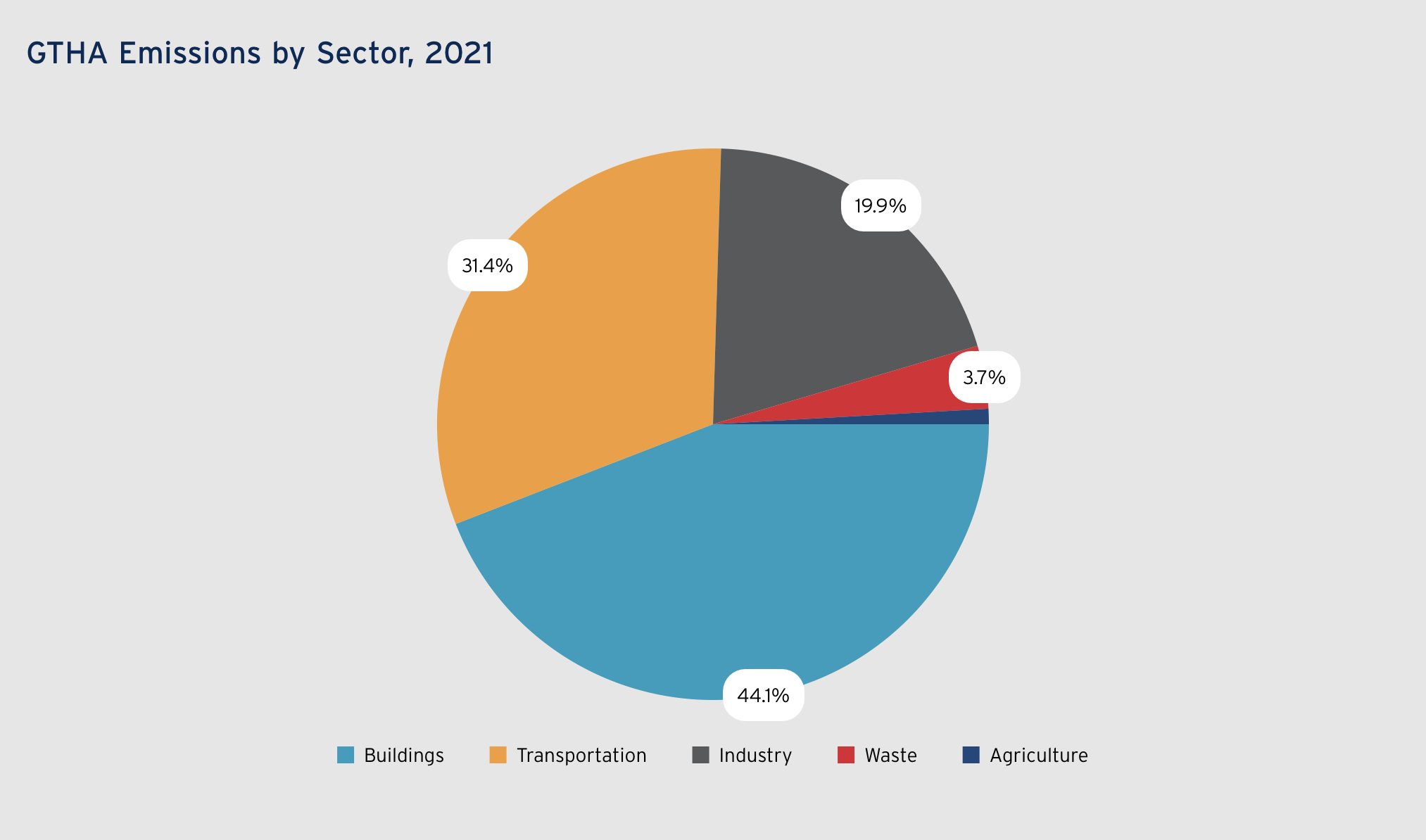
GTHA Emissions Increase to Pre-Pandemic Levels, Risking 2030 Targets
November 15, 2022 | By Logan Caswell
Emissions in the Greater Toronto and Hamilton Area increased by 2.2 million tonnes, or 4.5% in 2021.

(Photo provided by: The Atmospheric Fund)
A new report by the Atmospheric Fund (TAF) highlights the latest sources and amounts of carbon emissions in the Greater Toronto and Hamilton Area (GTHA). This year’s regional inventory includes 2021 data and analyzes longer term emissions trends and progress against targets.
Carbon emissions in the GTHA increased by 2.2 million tonnes, or 4.5% in 2021, climbing swiftly towards pre-pandemic levels. The overall flatlining trend reflects little progress since 2015. This stands in contrast to the average year-over-year 8% decrease needed to hit most cities’ 2030 targets; without immediate action, the rate only grows steeper if the region continues along the current trajectory.

(Photo provided by: The Atmospheric Fund)
Emissions from electricity rose by a staggering 28% in 2021 due to the increasing use of natural gas-powered generating plants, which increase the carbon intensity of the Ontario electricity grid overall.
Transportation emissions increased by 2.3% in 2021 after a sharp pandemic-related decrease in 2020 and are expected to continue to rebound in 2022.
Data shows the overall increase was driven by rising emissions in almost every sector: natural gas used for space heating in buildings; gasoline and diesel from more kilometers traveled by car; and increased use of natural gas for electricity generation, underscoring the need for strong climate action across the board. While emissions increased across the region, there were large differences in the pace, ranging from a massive 15% increase in Halton to a modest 1.3% increase in Toronto. For the first time, upstream emissions from natural gas, including from fracking and pipelines, are included in the inventory.
The report also highlights some of the effective carbon emission reduction policies and programs in place across the GTHA.
“With the new term of council starting today, GTHA municipalities and regions must accelerate policies, investments and engagements that support affordable, low-carbon communities,” sais Julia Langer, CEO of The Atmospheric Fund. “We need to break through the inertia and barriers that are paralyzing and undermining the region’s climate emergency response and tap into the many solutions available.”
To read the full report, visit carbon.taf.ca.




